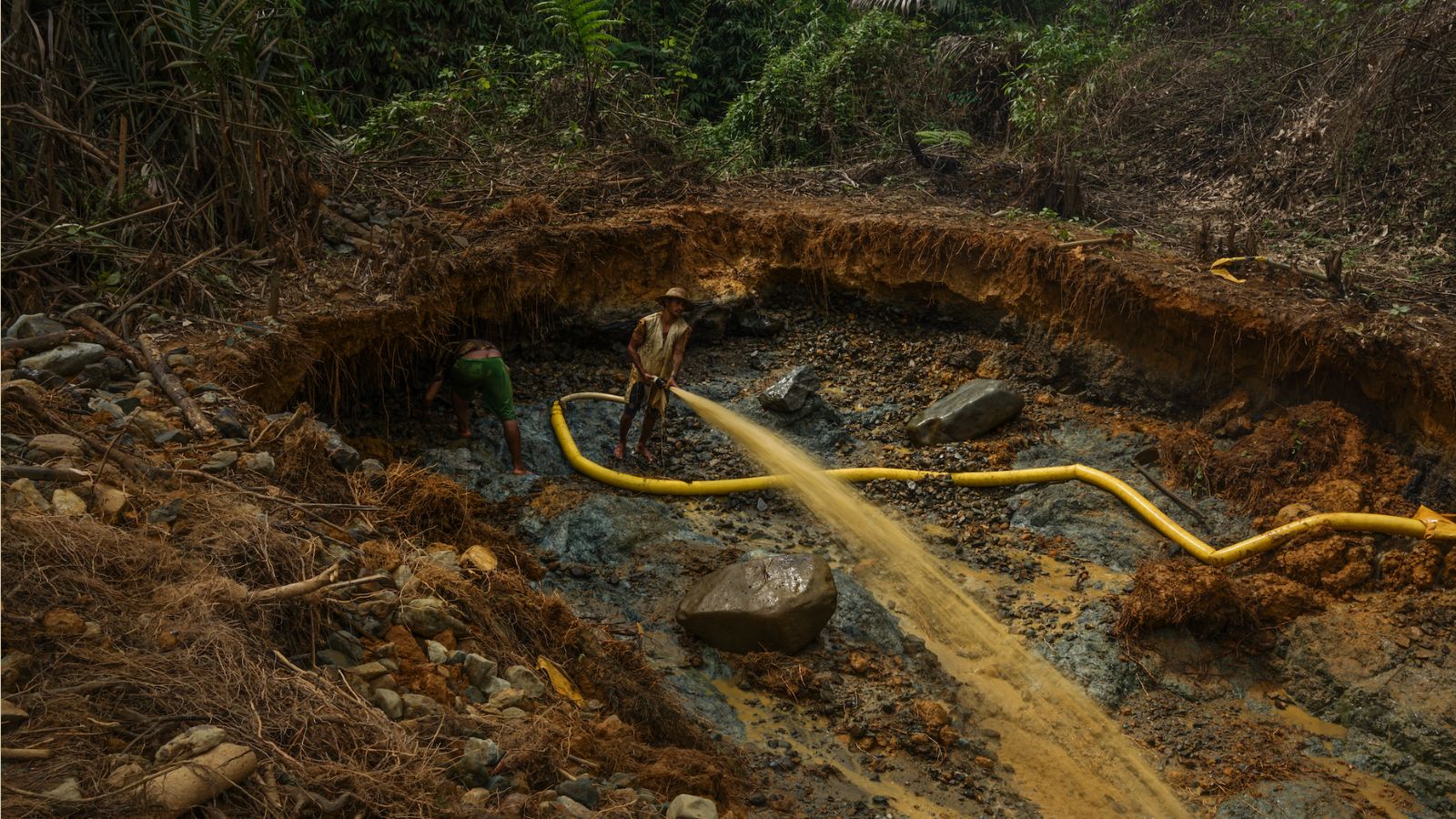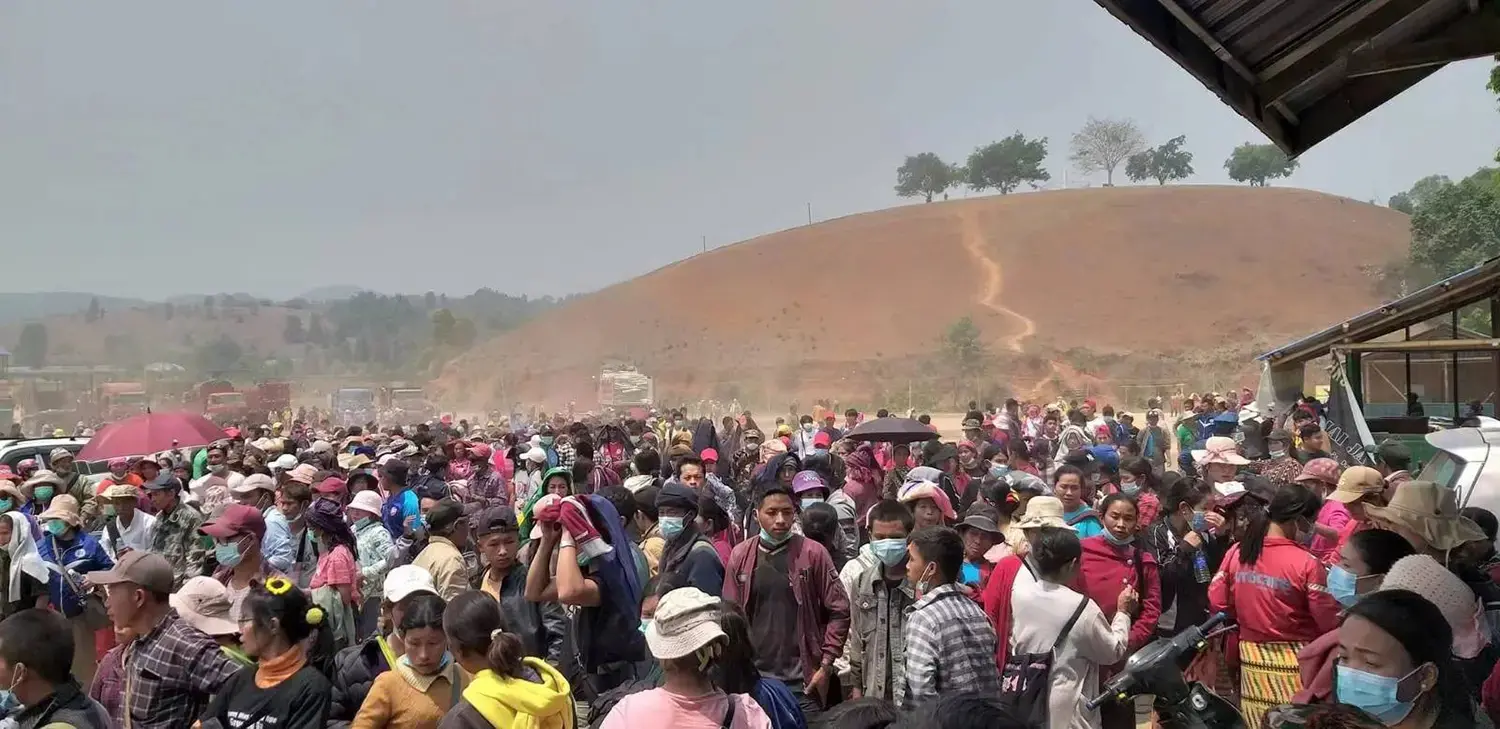
Despite rising financial pressures to supply weapons and provide public services in its territory, the KIO cancelled a major business deal in response to protests from local communities trying to protect their land and environment.
On April 15, in response to public protests, the Kachin Independence Organization cancelled controversial plans to allow new rare earth mining in the eastern district of its territory, in Kachin State’s Mansi Township.
KIO chairman, General N’Ban La, made the announcement to more than 1,500 people gathered from 10 villages at the organisation’s eastern headquarters of Mai Ja Yang. The mining, he said, had been intended as a way to fund development projects and procure weapons for its war against the military junta. But after listening to the concerns of residents, who feared it would poison their water and destroy their land, the KIO decided against it.
The decision – made before the mining companies had broken ground – marked an abrupt U-turn by the KIO. It came after more than four months of escalating tensions, as a local protest movement gained the support of activists, civil society organisations and much of the Kachin public amid allegations that the KIO had attempted to intimidate and pressure communities into accepting the mining.
Ultimately, however, the KIO appears to have prioritised the public’s concerns over its attempts to boost its share in an industry that has boomed along Kachin’s border with China’s Yunnan province over the past decade, but which has been dominated by junta-aligned armed groups connected to Kachin warlord Zahkung Ting Ying. His New Democratic Army – Kachin submitted to the military’s chain of command as a Border Guard Force in 2009, and has since run a range of illicit businesses in an area known as Special Region 1.
The KIO, which has been fighting for self-determination for more than six decades, has also since the February 2021 military coup thrown its weight behind the countrywide uprising to overthrow the junta. Its role in the Spring Revolution has brought it immense popularity, but also new demands as it battles junta forces, supplies arms and training to new anti-coup resistance groups, and steps into a widening governance vacuum.
The KIO has for decades relied on natural resources as its main source of income, and in the years leading up to the coup had engaged in consultations with the Kachin public toward formalising a resource governance policy. These plans, however, stalled with the coup, which threw the country into turmoil and worsened an already devastating resource grab. Rapid environmental degradation, combined with a broader progressive movement inspired by the Spring Revolution, have seen the KIO come under increasing pressure from the Kachin public to reform its practices.
These factors collided over the rare earth mining issue. Eventually, the protest movement reached a scale and intensity that drew a response from the KIO which is likely unprecedented in the organisation’s 62-year history, according to anthropologist Dr Laur Kiik, who studies the intersection of Kachin nationalism and environmental movements.
The protest movement, he said, reflects the culmination of more than two decades of environmental activism in Kachin, which after the coup, converged with a broader movement directed towards reforming the KIO.
“In my experience, many Kachin people criticise the KIO a lot because they support it; they want it to be better,” Kiik said. “They criticise the KIO with love.”
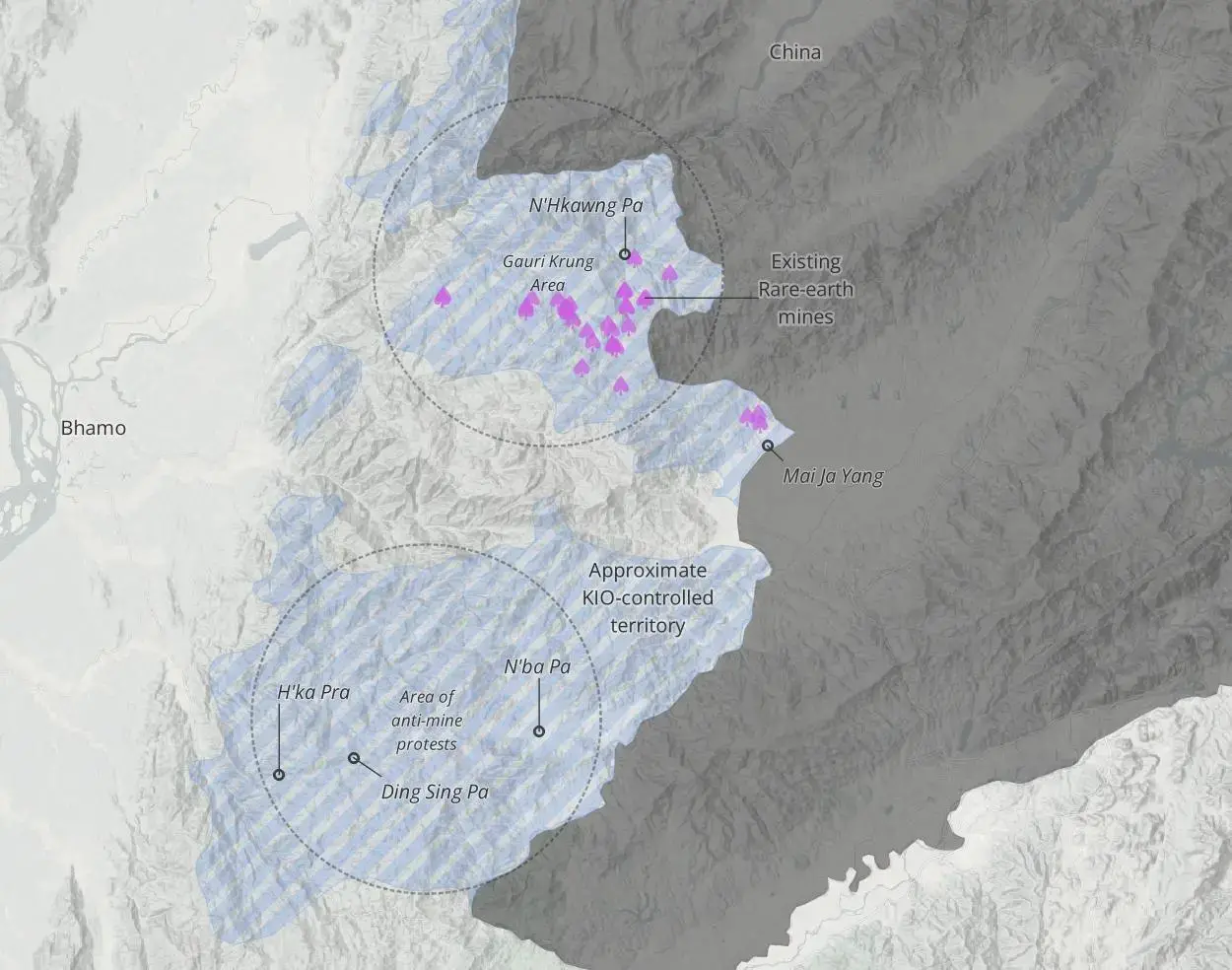
Tensions build
Three people involved in the protest movement highlighted a rocky road in the months leading up to the mining project’s cancellation. They said communities rallied to protect their land and livelihoods, rejecting financial incentives and enduring intimidation which began shortly after the companies arrived in September last year to assess the soil.
When villagers gathered to discuss how to respond, Brang Nu* said they were interrogated in a way that they would have expected from junta soldiers, but not the KIO.
“They asked people things like what we discussed and who attended the meeting,” he said.
On December 14, 10 villages near the planned mining sites in Mansi Township established a committee made up of 43 people, led by 10 Baptist and Catholic clergy. They prepared a letter stating that while they didn’t oppose the KIO or its business activities in general, they requested that the KIO cancel the mining project to protect the environment and the people who lived there.
Copies were sent to the KIO’s Man Maw (Bhamo) District office, its eastern regional headquarters of Mai Ja Yang and its main headquarters in Laiza. The committee received no direct reply, but locals were summoned to Man Maw on January 5.
Seng Du* recalled that a KIO official said the meeting wasn’t meant to be a discussion, but to notify them that they should stop protesting against the mining and disband their committee. A similar message, he said, was relayed by a KIO official from Mai Ja Yang during a visit to Ding Sing Pa village on January 11. The official, he said, also told local people that the mining had been approved by the KIO’s central committee.
Then on January 21, more than 50 people met 16 members of the KIO’s central committee in Laiza, where Frontier’s sources said they were told that the mining was necessary to fund the organisation’s fight against the junta, but that it would only proceed with local consent.
Seng Du said that days after the Laiza meeting, the protest committee was informed that the project had been temporarily suspended. But on February 17, KIO officials from Man Maw and Mai Ja Yang visited Ding Sing Pa with a different message.
“They said that the testing and preparation were finished and they were definitely going to start mining,” said Brang Nu. “They warned [us] locals that they would take serious action against anyone who stood against them or organised protests.”
One woman, Lahtaw Roi, suffered a heart attack during the meeting and died on her way to the hospital. Further incensed, the protest committee sent new letters calling on the KIO to order a stop to all activities related to the mining and to shut down the workers’ housing site by February 28, but received no reply.
On March 21, tensions boiled over. Hundreds of people marched on the housing site and repeated their demands, while calling on the two KIO officials and armed guards stationed there to join the protest movement, but received an unsatisfactory response. “They just told us to discuss it with the central office,” said Seng Du. That evening, the protesters demolished the site.
“Even when we met at their headquarters, they didn’t listen to us, so we realised that our government wasn’t taking action in response to what we had been asking,” said Brang Nu.
Global demand fuels an illicit industry
The KIO’s push for new rare earth mining coincides with a sharp rise in global demand. Used in technologies ranging from smartphones to combat weapons, electric car motors and wind turbines, the 17 elements collectively known as rare earths have captured international attention both for their significance in the trade war between the US and China and for their role in the “green transition” from fossil fuels.
The extraction process is far from environmentally friendly however. Toxic chemicals are used to leach out the elements from the earth, contaminating soil and water and posing significant threats to ecosystems and human health.
These issues drove China, the world’s dominant exporter, to begin cracking down on domestic rare earth mining in 2010. It has since looked to Myanmar to meet the deficit, effectively outsourcing the environmental destruction. Notorious for weak resource governance, Myanmar has surpassed China as the world’s leading source of the scarcer and more lucrative “heavy rare earths”, according to a report published last August by the environmental watchdog group Global Witness.
It found that Myanmar’s rare earth mining industry is illicit, controlled by armed groups, and involves a complex web of local companies serving as fronts for Chinese investors. Through satellite imagery, it identified nearly 300 clusters of chemical leaching pools – the characteristic sign of rare earth mining – hugging Kachin’s mountainous eastern border. Known as Special Region 1 and located in the Pangwa area of Chipwi Township, it is controlled by Zahkung Ting Ying’s paramilitary Border Guard Force and connected militias.
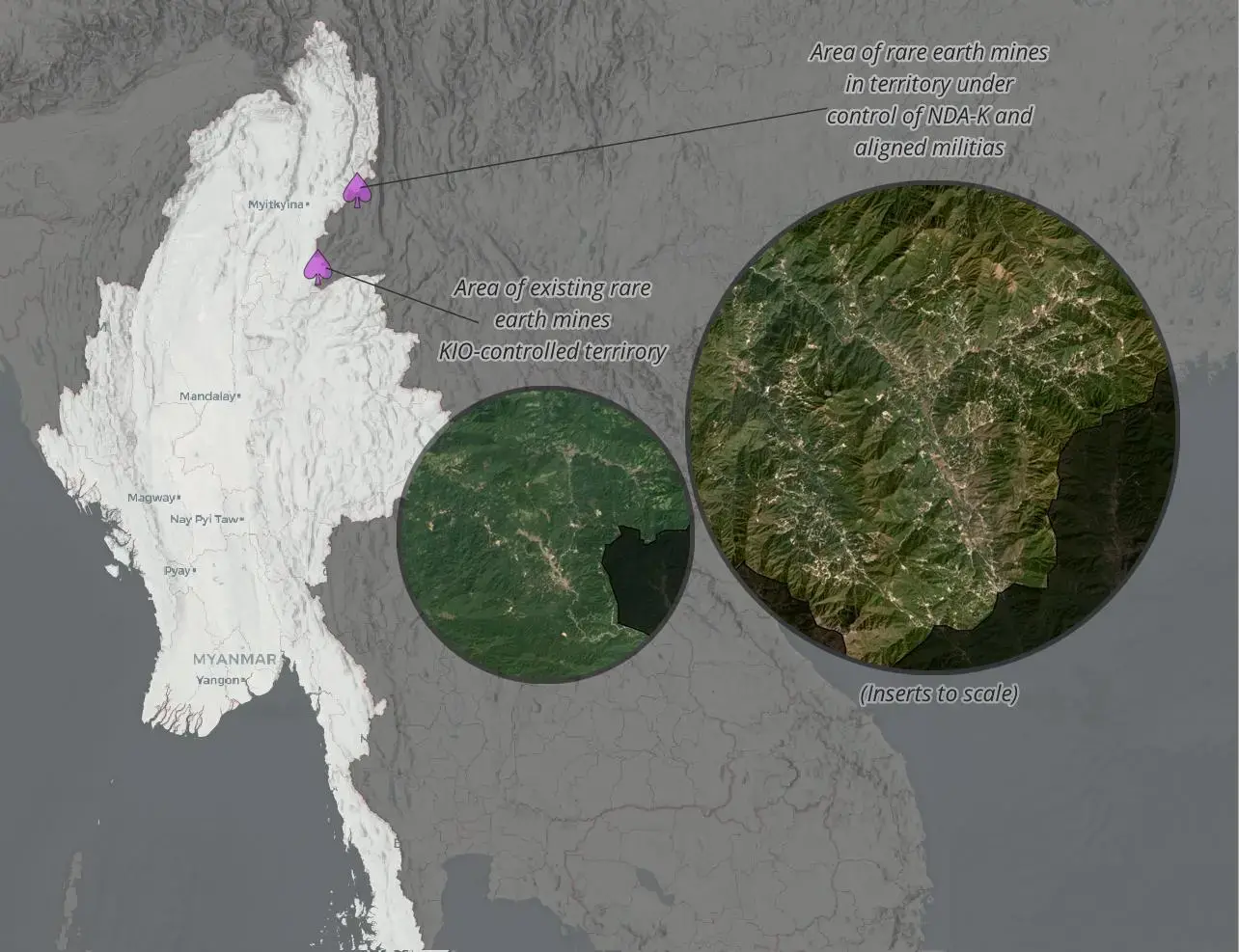
While the KIO’s involvement in the industry is much smaller, it has also permitted rare earth mining in its territory for the last 10 years, according to Dr Hkalen Tu Hkawng, Minister of Natural Resources and Environmental Conservation with the National Unity Government. He told Frontier that the KIO first allowed rare earth mining near Mai Ja Yang around a decade ago, but that after residents raised concerns, it relocated the sites to the N’Hkawng Pa and Gauri Krung mountain ranges, where mining continues today.
A Kachin man who began working at a mining site in the N’Hkawng Pa area in September last year described digging holes into mountains and flushing chemicals through them – a method known as in situ leaching – which is the more common rare earth mining practice in Myanmar.
“All the trees are dying. Some paddy fields are not fertile, and [rice] production has decreased. Some people mentioned that their livestock died near the mining area,” said the worker, who is now working at a sugarcane farm, and is still considering whether or not to return to the mining job.
Mining operations in Kachin typically leave little paper or digital trail, and the recently cancelled rare earth project appears to be no exception.
Local sources told Frontier that in September last year, three companies came to conduct soil assessments in preparation for mining, two of which quickly left. They said the remaining company, Shwe Ka, employed Chinese-speaking Burmese and Wa workers.
Frontier was unable to confirm this information with Colonel Naw Bu of the KIO’s information department, who said that he was not authorised to speak about the case. But in N’Ban La’s speech on April 15, he said the cancelled deal had involved a “Wa armed group” – presumably a reference to the United Wa State Army, Myanmar’s largest ethnic armed group.
The UWSA agreed to a ceasefire with the military in 1989, and the military officially recognised some of its territory in Shan State on the border with China. It also awarded the UWSA with business concessions, including in Kachin’s lucrative jade mines, where it has since operated alongside the KIO and its armed wing, the Kachin Independence Army, as well as the military and other armed groups.
Mr Jason Tower, Myanmar country director at the United States Institute of Peace, told Frontier that the possible involvement of the UWSA in rare earth mining in KIO-controlled territory was not surprising, considering its access to capital and Chinese markets and its ties to Kachin’s jade industry.
“For the Wa, business is business, and it is unlikely that they would try to leverage involvement in extractives in Kachin to advance political objectives,” he said. “The much more significant factor here is the Chinese influence on the political positions of both the UWSA and the KIA.”
Both groups are members of the Federal Political Negotiation and Consultative Committee, a bloc of powerful ethnic armed groups with close ties to China. Beijing has encouraged these groups to negotiate with the junta since the coup, which the UWSA has done regularly while the KIO has largely refused.
A 2021 Global Witness report on the link between Kachin’s multibillion-dollar jade industry and armed conflict described the UWSA as a “key powerbroker” in the mines, and found that it sometimes used weapons to pay taxes to the KIO. The coup, said the report, threatened to further increase jade-linked conflict and corruption.
Ms Hanna Hindstrom, senior investigator at Global Witness, told Frontier that if the KIO had gone forward with the rare earth mining plans in its eastern district, it would have intensified conflict resource dynamics, poisoned the environment, and bred anger and distrust among communities.
“The KIO is undeniably in a difficult position – it is desperate for cash to fund its resistance against a brutal military junta and surging global demand for heavy rare earths offers a lucrative lifeline,” she said. “But allowing shadowy entities to mine rare earths risks fuelling corruption, environmental devastation and human rights abuses in Kachin State, while contaminating international supply chains with conflict minerals.”
“The rights of indigenous and local communities must not be sacrificed on the altar of democracy,” she added.
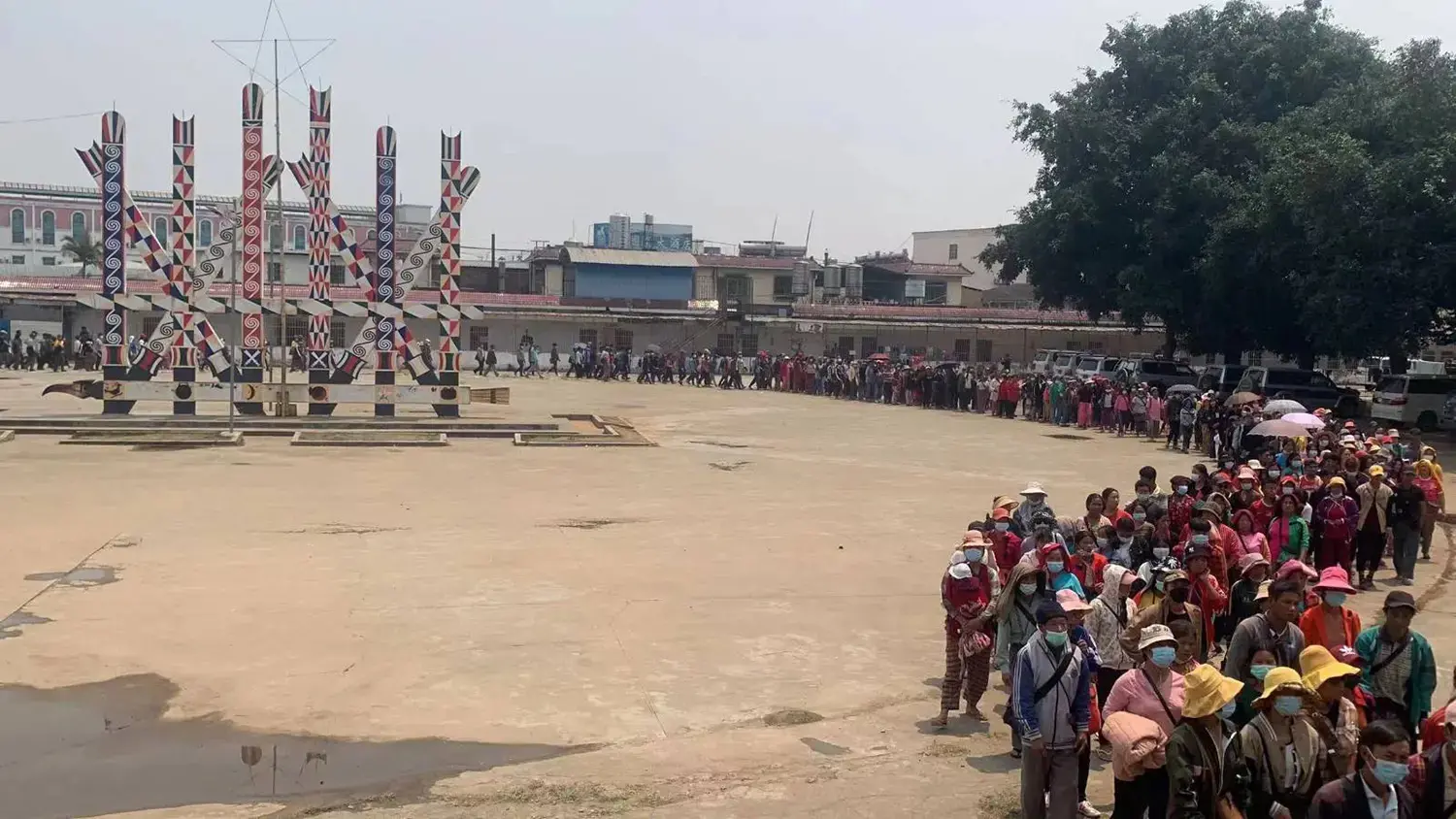
The KIO backs down
In addition to the threats the mining would have posed to the environment, it also risked jeopardising the KIO’s relationship with its key support base – the Kachin people. “They threatened us in many ways. They don’t love their people anymore. They only want to protect the businessmen, the tycoons,” said La Htoi,* a member of the protest committee, in early April.
By this time, the case had raised wider concerns. Awng Awng,* a young KIA soldier, told Frontier that he worried the situation would “become very intense” if the KIO could not reach a mutual understanding with the people.
Awng Awng also said that he wanted to see his leaders embody the ideals for which he was fighting. “We joined the KIA not only to protect our people and our nation, but also to protect our natural resources and environment,” he said.
Kachin activists were also worried. “The KIO/A has the responsibility to act in a way to satisfy the local people…[or] it will affect the public’s view toward the Kachin revolution,” said Sut Seng Htoi, a prominent Kachin activist and spokesperson for the Kachin State Civilian Movement.
On April 13, Kachin civil society organisations released a joint statement condemning the KIO for pressuring communities, and for failing to seek positive solutions to their concerns. It called on the KIO to cease all rare earth mining across the state, respect local voices and implement “sustainable resource-free systems”.
Two days later, the KIO cancelled the project, and criticism and resentment quickly gave way to praise and relief.
“We are very happy and grateful,” said Kachin activist Khon Ja, one of the most outspoken critics of the mining, in a Facebook post hours after the cancellation was announced.
Nsang Gum San, spokesperson of the Kachin Political Interim Coordination Team, told Frontier that the case was unique in that residents “believe the environmental cost of rare earth extraction could not be compensated by any financial incentive or profit sharing”, and encouraged Kachin residents to continue raising awareness of environmental degradation, including in regime-occupied areas.
“This case highlights that dissent and freedom of expression are highly valued in KIO-controlled territories,” he added. “Projects which were initially planned to operate could be overturned by locals’ disapproval.”
Sut Seng Htoi also celebrated the success of the protest movement and called on the Kachin public to continue to speak out against all forms of injustice. “I see it as a good impact that the KIO/A government will have to fix itself from now on when building Awm Dawm, the self-determination that we want,” she said. “The government has to listen to the voice of the Kachin people.”
For Brang Nu, the KIO’s reversal renewed his confidence in the organisation and its chairman. “We, the local people, came together to fight against the mining,” he said. “Our leader didn’t waste much time in deciding to halt the mining. He also said he supported the people’s protests against it, for which we are very happy. We trust him again as the leader of our nation.”
Nu Nu Lusan contributed to this report
*Denotes use of a pseudonym to protect the source from possible reprisals





